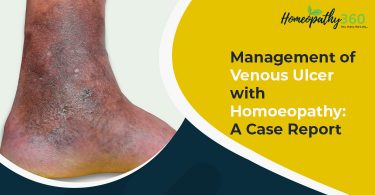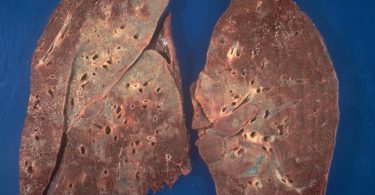-by Dr.Sheela Dandge, Dr.Rutu Thakkar
Abstract:
Now a day’s mother frequently uses diaper for infants at the same time diaper rash is most common skin disorder observed in infants which are generally very painful and burning; due to which infants keep on crying, and most of the times parents could not suspect and ultimately they land on something else. Homoeopathy is best and safer for diaper rash rather than topical medications.
Keywords:
Diaper Dermatitis, Diaper rash, Homoeopathic Medicines.
Introduction :
Diaper rash is also known as diaper dermatitis. Diaper dermatitis is a Eczematous skin disorder are characterized by exudation, coarse skin marking and pruritus. Many types of eczema occur in children; the most common type is atopic dermatitis, although seborrhic dermatitis, allergic and irritant contact dermatitis, nummular eczema, and vesicular hand and foot dermatitis are also relatively common in childhood. Diaper dermatitis is a type of contact dermatitis. The condition in which skin is inflamed due to the exposure to a chemical irritant or a sensitizer is grouped as contact dermatitis.2Contact dermatitis can be subdivided into 1) irritant dermatitis, resulting from nonspecific injury to the skin, and 2) allergic contact dermatitis, in which the mechanism is a delayed hypersensitivity reaction. Irritant dermatitis is more frequent in children, particularly during the early years of life. Irritant dermatitis can result from prolonged or repetitive contact with various substances that include saliva, citrus juices, bubble bath, detergents, abrasive materials, strong soaps, and proprietary medications. Irritant contact dermatitis usually clears after removal of the stimulus and proper medication. Education of patients and parents about the causes of contact dermatitis is crucial to successful therapy.1
Diaper dermatitis:
Diaper dermatitis can be regarded as the prototype of irritant contact dermatitis. As a reaction to overhydration of the skin, friction, maceration, and prolonged contact with urine and faeces, retained diaper soaps, and topical preparations.1Appearance: The skin of the diaper area may become erythematous and scaly, often with papulovesicular or bullous lesions, fissures, and erosions. The eruption can be patchy or confluent, but the genitocrural folds are spared. Chronic hypertrophic, flat-topped papules and infiltrative nodules may occur.
Aetiology:
Secondary infection with bacteria or yeasts is common. Discomfort may be marked because of intense inflammation.
Differential Diagnosis: Before initiating such therapy, the possibility of candidal infection should be considered. Candidal infection can be identified by red-pink tender skin that has numerous 1-2 mm pustules and papules at the periphery of dermatitis.
Clinical features:
Irritant contact dermatitis often presents with the well-demarcated area of dermatosis with erythema, vesiculation, thickening of skin or fissuring.
Diagnosis:
The contact of the affected area to the specific chemical irritant is the clue to the diagnosis of irritant contact dermatitis which can be further confirmed by a negative patch test result in such cases.2
Precaution:
Diaper dermatitis often responds to simple measures; some infants are predisposed to diaper dermatitis, and management may be difficult. The damaging effects of overhydration of the skin and prolonged contact with faeces and urine can be obtained by frequent changing of the diapers. Over-washing should be avoided because it leads to chapping and a worsening of dermatitis. The area should be kept clean, fresh and dry; so that the chances of infections get lowered. The cotton cloth should be used instead of diapers where possible. Make sure that the diaper doesn’t remain for a longer period of time.
Homoeopathy
Dr Hahnemann has discussed the treatment of Local Affection with more Topical Employment of medicine. He stated that removal of the local symptoms of the local affection by topical administration of non-homoeopathic external remedies leads to rousing up of the internal disease. Such disappearance of the local symptoms of the local affection is popular, though incorrectly called suppression. What really happens is the intensification of the internal disease and canalising the disease force through other channels leading to derangements of other parts of the body.3(i)It has been given about that unless and until the cause is removed, we won’t get the cure. So it is very necessary to remove the maintaining cause.3(ii)
Related rubrics:
Murphy repertory:
children, diaper, rash, buttocks4
Synthesis repertory:
Extremities – Eruptions-Nates5
Homoeopathic medicines:
- Graphites:
Great antipsoric remedy. Has a particular tendency to develop the skin phase of internal disorders. Eradicates tendency to erysipelas. Eruptions, oozing out a sticky exudation. Unhealthy skin; every little injury suppurates.6(i) Graphites is used in Excoriation of the skin, in the bends of limbs, groins, neck, behind the ear, especially in the children. Red spots on the skin, like flea bites. Erysipelatous inflammation.7
- Natrum carb:
The inclination to Perspire easily, or dry, rough, cracked skin. Vesicular eruption in patches and circles. Great debility caused by summer heat.6(ii) Ulcers with swelling and inflammatory redness of affected parts. Skin dry rough and chapped. Tingling under the skin. Dryness of skin with profuse sweat from least exercise.8(i)
- Nitric acid:
Blisters and ulcers in mouth, tongue, genitals; bleed easily. Fissures, with pain during stool, as if rectum were torn. All discharges very offensive, especially urine, faeces and perspiration. A broken down and greatly debilitated child who suffers from diarrhoea off and on all the time. Face pale yellow, sunken. Eyes sunken. Ailments from continued loss of sleep. Irritable and vindictive child. Discharges are excoriating, thin, dirty or brown, offensive. With diarrhoea there is soreness and Rawness of anus, the stool is putrid in children, may contain lumps of casein. Slimy stools from an excess of mucus, pale pasty sour offensive. Profuse frequent micturition at night. Urine is very pungent strong smelling like horse’s urine.6(iii)
- Mercurius corrosivus
Burning and redness of skin with the formation of small vesicles. Eczema of sweating parts of the body exposed to fumes. Dysentery characterised by corrosiveness. Which excoriating parts. Itching about the anus. Stool hot, frequent, scanty with mucus. 8(ii)
- Sepia:
Urine deposits reddish clay-coloured sediment which adheres to the vessel, fetid, so offensive. Enuresis bed is wet almost as soon as the child goes to sleep. Itching of skin on various part especially around genitalia.9
- Sulphuric acid:
Diarrhoea, fetid, black, with the sour odour of the body. Livid, red, itching blotches. Carbuncles, boils and other staphylococcic and streptococcic infections. Purpura haemorrhagic. Worse from the excess of heat or cold better from warmth6(iv)
Conclusion:
The fact is that unless and until maintaining the cause is not removed, diaper rash would keep on re-appearing. The parents who use topical preparations for diaper rash to infants at first instance do not cure this dermatitis. The best way is to give proper homoeopathic medicine on the basis of totality & make parents aware of such conditions. Homoeopathic medicines are very useful for diaper rash.
References:
- Kliegman, Behrman, jenson, Stanton; nelson Textbook of paediatrics;18th edition vol-2; new Delhi; saunders Elsevier publishers; 2008; p-2693.
- piyush Gupta, psn Menon, Siddarth Ramji, Rakesh Lodha; pg textbook of paediatrics;2nd edition:2018 vol-3 systemic disorders and social paediatrics; new Delhi; Jaypee brothers medical publishers (p) ltd.; 2015; p-3085.
- Boericke W.; Organon Of medicine Hahnemann’s own written revision Sixth edition; New Delhi, B.Jain publisher (P) Ltd, Reprint edition: 2004;3(i)Aphorisms194 -198 p.174, 3(ii) Aphorism 7 p.56.
- Robin M.; Homoeopathic medical repertory a modern alphabetical & practical repertory, 3rd edition; Noida; B. Jain publisher (P) Ltd;2017;p.331
- Frederik S.; Synthesis Repertorium homoeopathicum Syntheticum; edition 8.1; New Delhi; B.Jain publisher (P) Ltd; p-1343.
- William boericke; Pocket manual of homoeopathic materia medica with Indian medicine & repertory; 9th edition; new Delhi; Indian books & periodicals publishers; July 2011 p-(i)312(ii)458(iii)470(iv)625.
- Clark J.; A dictionary of practical materia medica; Vol-1; New Delhi; B Jain publisher(P)Ltd;2004, p-459.
- Clark J.; A dictionary of practical materia medica; Vol-2; New Delhi; B Jain publisher: 2004, p-(i)544(ii)464
- Allen H.C.; Keynotes rearranged and classified;10th edition; Noida; B.Jain publisher (P) Ltd;2017;p-280
About the author:
- Dr. Sheela Dandge.
P.G. Lecturer, M.D.(HOM) (Practice of Medicine)
J.N.H.M.C, Parul University, Vadodara, Gujarat. - Dr Rutu Thakkar.
BHMS, CFN, M.D. Part-1 (Practice of Medicine)
J.N.H.M.C, Parul University, Vadodara, Gujarat.




